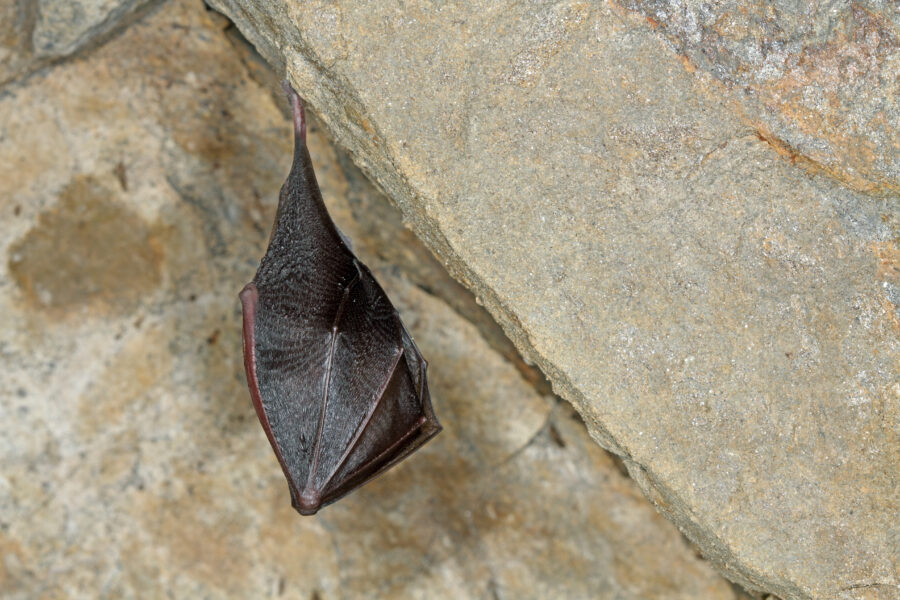
Lesser Horseshoe Bat - Cave Animal of the Year 2022
Introduction

Due to the Corona pandemic, the International Year of Caves and Karst in 2021 (http://iyck2021.org/) has been extended to 2022. Its purpose is to draw attention to the worthiness of protection of karst landscapes and their diverse karst phenomena with a series of publicity campaigns. One of these campaigns is the selection of an international "Cave Animal of the Year". For this purpose, the group of bats was selected, from which each participating country will choose a cave-dwelling bat species occurring in their area and present it to the public and the authorities as their "Cave Animal of the Year". With the selection of the Lesser Horseshoe Bat, the German Speleological Society wants to point out that there is still an enormous need for action, especially in the research of underground ecosystems and the species occurring therein.
The Lesser Horseshoe Bat (Rhinolophus hipposideros) was scientifically described in 1792 by the German naturalist Moriz Balthasar BORKHAUSEN. The species belongs to the family of horseshoe bats (Rhinolophidae), which is represented in Germany by two species.
Lesser Horseshoe Bats are typical cave bats. They prefer both summer and winter roosts in large karst areas. For this characteristic, the bat species was chosen as "Cave Animal of the Year 2022". The Lesser Horseshoe Bat stands for a large number of animal species that depend on protected and frost-free retreats underground.
Description
The Lesser Horseshoe Bat is one of the smallest native bat species in Germany. It is easily recognised by its horseshoe-shaped nose-leaf. Its fur is brownish to yellowish brown on the back, the underside is greyish white. During hibernation, the species wraps itself completely in its wings. Here the animals hang out in caves, tunnels and cellars with temperatures of 6 to 9 °C; they always keep a distance to their conspecifics. Horseshoe Bats are always free-hanging from the ceiling; they are never found in crevices.
In Germany, the maternity roosts, i.e., the colonies where the females raise their young together, are mostly located in warm attics and buildings. However, there are exceptions like a south-exposed karst cave in Kyffhäuser (Thuringia). Males also use caves as day roosts in the summer months. Lesser Horseshoe Bats are extremely faithful to their roosting sites. Their radius of activity is usually less than 20 kilometres.
Distribution
The Lesser Horseshoe Bat has the most northerly distribution of all horseshoe bats. It occurs in the Mediterranean region and northwards to western Ireland and western Great Britain. In Germany, after a severe population decline in the 1960s, the species is nowadays only found in northeastern Hesse, Thuringia, Saxony-Anhalt, Saxony and Bavaria.




